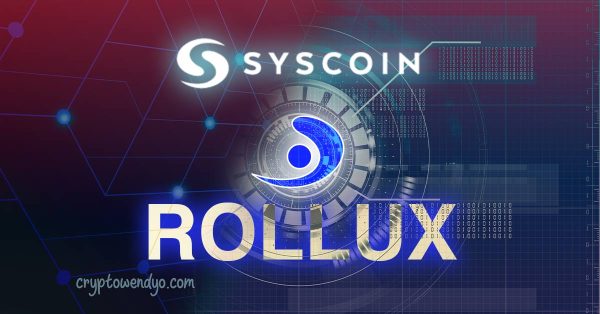


Hi, folks. Sherpa here with another dive into scaling solutions & specifically, Syscoin. This is a pretty common theme in my articles, because scaling is one of the hardest problems any company, chain, or project has to tackle.
Syscoin’s Rollux Suite is a multi-directional approach to scalability that addresses both on-chain and off-chain scaling solutions and introduces Optimistic and later zk-Rollups to the Syscoin Ecosystem. You might remember us discussing optimistic & zk-Rollups back in December 2021, but Syscoin is attempting something a bit more holistic.
If you read my recent article on the Ethereum Merge, you’ll recall my distaste for the direction Ethereum was heading, because of several reasons I didn’t get into at the time. Foremost, security, and my belief that Proof of Work is just a better model for ensuring the security of a Layer 1.
Secondly, I’m of the opinion that a better approach would be incentivizing the migration of dapps, defi, NFTs, and other ‘heavy’ execution functions to rollups and L2s, and utilizing the PoW layer primarily for settlement & confirmation.
Thankfully, it seems like the Syscoin team is very much on the same page. They’ve very cleverly managed to take the choicest parts of several chains & add them à la carte into their architecture for a “best of both worlds” design.
Let’s take a quick look at the features Syscoin inherits & builds upon from both Bitcoin & Ethereum.
Syscoin Native Chain (Layer-1, UTXO)
All of these innovations drastically improve the security & tps of the Syscoin native utxo chain, and the NEVM and Rollux extend the utility through Syscoin’s dual-chain architecture.
With the introduction of NEVM, Syscoin added the full potential of Ethereum coupled with all of the innovations of the native chain via a trustless bridge.
When you think of bridges to most L2s, they’re communicating, but as we covered in our article on Bridge Hacks & Exploits, there is always some concern about miscommunication.
Syscoin’s NEVM & rollups are naturally interoperable and bridged trustlessly & seamlessly, though, with burn and mint functions happening in parallel on both ends utilizing dual smart contracts and SPV Proofs, meaning assets can be transferred 1:1 with full confidence & functionality.
As I mentioned at the beginning of the article, Syscoin smartly incentivizes the use of the layer one NEVM as a settlement layer for the rollups or a modular framework for smart contracts, by keeping the block time slow (2.5 minutes).
This helps guarantee stable finality using the masternode network, but it also incentivizes users & dapps to utilize the rollups for their increased speed, which keeps the bloat off L1.
Through the inclusion of EIP-1559 and having Sys function as a gas token, Bitcoin miners are further incentivized to lend security to the consensus layer.
Rollux helps scale this functionality in a number of ways. Let’s go over a few of them in brief, and dive a bit deeper in a future article, as they’re some pretty big concepts.
When you add in asset notarization for regulated assets, it isn’t hard to imagine a more mature ecosystem where secured or regulated assets can coexist with unsecured or unregulated assets, with users opting in to more disclosure or KYC if they want to interact with the regulated side.
I’m excited to see where this leads, as more concerns mount of censorship on Ethereum, I can’t help but wonder if there isn’t a freer future elsewhere. With the rollout of Rollux, that future certainly seems more scalable.
I’ve linked documentation throughout the article if you’d like to dive deeper, and you should. As always, trustless and verify.

Torrent/seedbox aficionado, decentralist, cultural archivist, fundamental analyst, podcast addict, shitcoin-sifter extraordinaire
Tip Jar
BTC: bc1qahxrp47hpguhx8y8r382dekgca34tlv54aufht
Doge: DJRy9gGSUGeyXfVcZXzKLkBv7RmDLv3MhJ
Share This Article
Join 10,000+ forward thinkers! Get crypto education in your inbox.